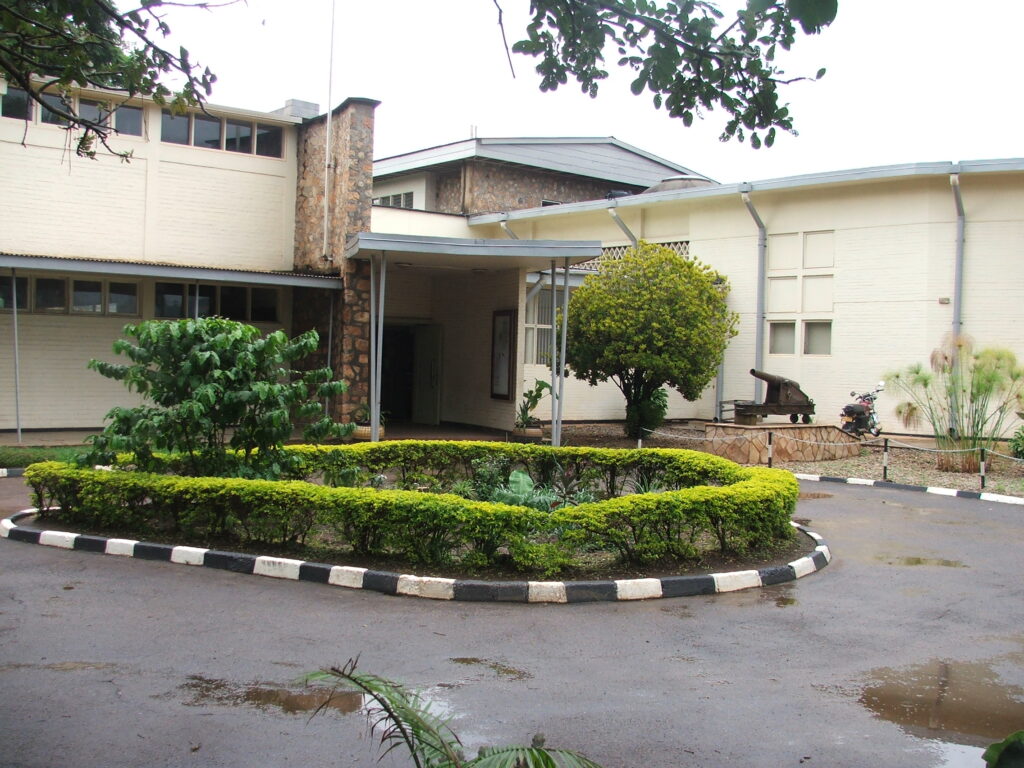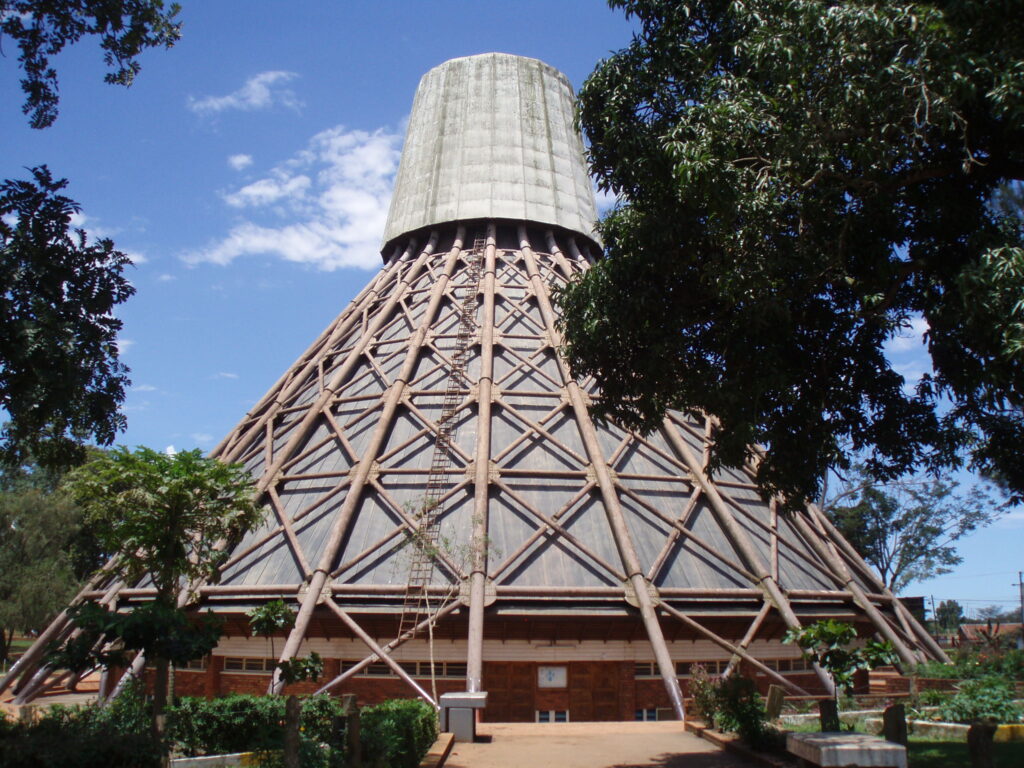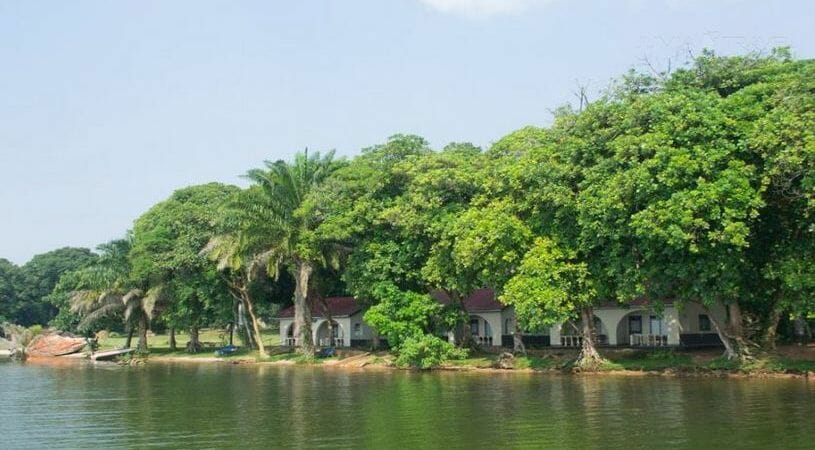Uganda, a landlocked country in East Africa, is renowned for its stunning landscapes, diverse wildlife, and vibrant culture. However, beyond its natural beauty lies a hidden treasure trove of historical sites that offer a glimpse into the nation’s rich past. Though famed for its mountain gorillas, Uganda offers a cultural experience that is just as fascinating.
These historical sites not only hold immense cultural and historical significance but also play a pivotal role in shaping Uganda’s identity and promoting tourism.
Overview of Uganda’s Rich Historical Heritage
Uganda’s historical heritage is incredibly diverse, spanning centuries and encompassing various cultures, civilizations, and historical events. From the ancient kingdoms of Buganda, Bunyoro-Kitara, and Toro to the colonial era and the struggle for independence, the country’s historical narrative is a tapestry woven with captivating stories and remarkable achievements.
The ancient city of Kasubi is home to the Kasubi Tombs, a UNESCO World Heritage site and the royal burial grounds of the Buganda Kingdom. These tombs serve as a testament to the rich cultural traditions and customs of the Buganda people.
The Uganda Museum, located in Kampala, showcases a vast collection of artifacts, ranging from archaeological finds to ethnographic displays, unraveling the story of Uganda’s diverse ethnic groups.
Another notable site is the Namugongo Martyrs Shrine, which honors the Christian martyrs who were executed for their faith in the late 19th century.
Beyond the mainland, the Ssese Islands hold archaeological treasures that shed light on the ancient kingdoms that once thrived in the region. These islands offer a unique opportunity to explore the remnants of past civilizations and the vibrant cultural traditions that have endured through generations.
Historical Sites in Uganda: A Closer Look
Uganda is a country blessed with a rich tapestry of historical sites that offer a fascinating glimpse into its past. These sites hold immense cultural and historical significance, providing visitors with a deeper understanding of the nation’s heritage. Let’s take a closer look at some of the key historical sites in Uganda and the stories they tell.
Kasubi Tombs: The Royal Burial Grounds
Located in the heart of Kampala, the Kasubi Tombs are a UNESCO World Heritage site and the burial grounds of the Buganda Kingdom’s kings and royals. These magnificent tombs showcase the unique architectural style of the Baganda people and provide a window into their rich cultural traditions.
The Kasubi Tombs are not only a place of burial but also serve as a spiritual and cultural center for the Buganda Kingdom. They are the venue for important rituals, ceremonies, and cultural events that celebrate the traditions, beliefs, and values of the Buganda people. The intricate craftsmanship of the tombs, made primarily of thatched roofs and wattle walls, is a testament to the exceptional skills of the Baganda craftsmen.
Visiting the Kasubi Tombs offers a profound cultural experience. It allows visitors to appreciate the deep-rooted traditions and customs of the Buganda people, providing insights into their social hierarchy, political systems, and spiritual practices. The tombs also house a collection of artifacts, including royal regalia, musical instruments, and historical documents, offering a comprehensive view of the Buganda Kingdom’s history and heritage.
Uganda Museum: Showcasing Uganda’s History and Culture

Situated in Kampala, the Uganda Museum is a treasure trove of artifacts that chronicle the country’s rich history and diverse cultural heritage. Established in 1908, it is one of the oldest museums in East Africa and houses an extensive collection of archaeological finds, ethnographic displays, and traditional artifacts.
The museum is divided into different sections, each focusing on a particular aspect of Uganda’s cultural heritage. From prehistoric artifacts and archaeological discoveries to exhibits showcasing traditional dress, musical instruments, and crafts of various ethnic groups, the Uganda Museum offers a comprehensive overview of the country’s cultural diversity.
Visitors to the museum can explore the exhibits, learning about the different tribes and their unique traditions, customs, and ways of life. The museum also hosts educational programs, workshops, and cultural events that provide immersive experiences for visitors of all ages and backgrounds. It serves as a platform for cultural exchange, fostering understanding and appreciation of Uganda’s diverse cultural fabric.
Namugongo Martyrs Shrine: Commemorating Uganda’s Christian Martyrs

The Namugongo Martyrs Shrine is a sacred site located near Kampala, commemorating the execution of 45 Christian martyrs in the late 19th century. These martyrs, both Catholic and Anglican, were killed for their refusal to renounce their faith during the reign of Kabaka Mwanga II.
The shrine is a place of pilgrimage and worship for Christians from all over the world. Every year on June 3rd, a grand celebration takes place, attracting thousands of pilgrims who gather to honor the martyrs’ sacrifice. The shrine’s architectural design draws inspiration from traditional African huts, symbolizing the fusion of faith and cultural heritage.
Visiting the Namugongo Martyrs Shrine offers a powerful spiritual experience. The serene atmosphere, coupled with the stories of bravery and unwavering faith, creates a profound sense of reverence. Pilgrims and visitors can explore the shrine’s grounds, visit the Martyrs Museum, and participate in religious ceremonies, gaining a deeper understanding of the martyrs’ devotion and the enduring legacy of their sacrifice.
Ssese Islands: Tracing the Ancient Kingdoms

Away from the mainland, the Ssese Islands in Lake Victoria hold a wealth of historical treasures that offer insights into the ancient kingdoms that once thrived in the region. These islands are home to archaeological sites and remnants of past civilizations, providing a unique opportunity to delve into Uganda’s precolonial history.
Exploring the Ssese Islands allows visitors to trace the footsteps of the ancient kingdoms of Buganda, Bunyoro-Kitara, and Toro. The islands are adorned with sacred sites, ancient shrines, and burial grounds that offer glimpses into the spiritual beliefs and practices of the past. The rich biodiversity of the islands, coupled with their historical significance, makes them a haven for nature lovers, history enthusiasts, and cultural explorers.
Visiting the Ssese Islands offers a chance to immerse oneself in the rich tapestry of Uganda’s ancient past. From exploring archaeological sites to interacting with the local communities and experiencing their traditions, the islands provide a unique perspective on the historical heritage of the region.
Challenges and Future Prospects for Historical Site Preservation
While historical sites in Uganda hold immense cultural and historical value, they face various challenges that threaten their preservation. From urbanization and development pressures to natural factors and poor infrastructure, these sites require concerted efforts to ensure their long-term survival. Let’s explore the challenges faced by historical site preservation in Uganda and potential strategies for their conservation.
Threats to Historical Site Preservation
- Urbanization and Development Pressures: As Uganda experiences rapid urbanization and economic development, historical sites often face encroachment and the risk of being overshadowed by modern infrastructure projects. The expansion of cities and towns can lead to the destruction or alteration of the surrounding landscapes, impacting the integrity and authenticity of historical sites.
- Natural Factors and Climate Change: Historical sites are vulnerable to natural factors such as erosion, flooding, and weathering. Climate change exacerbates these threats, with increased rainfall patterns, rising temperatures, and extreme weather events putting additional stress on fragile structures and landscapes.
- Poor Infrastructure and Accessibility: Inadequate infrastructure, including roads, transportation networks, and visitor facilities, can hinder access to historical sites. Limited accessibility discourages tourism and research, impeding the efforts to preserve and promote these sites effectively.
Conservation Strategies and Initiatives
- Government Efforts and Policies: The Ugandan government plays a pivotal role in historical site preservation through the establishment of laws, regulations, and policies. Strengthening legal frameworks and enforcing strict regulations can help protect historical sites from encroachment, vandalism, and illegal excavations. The government can also allocate funds for conservation projects and provide support to local communities and organizations involved in preservation efforts.
- Collaboration with International Organizations: Partnerships with international organizations, such as UNESCO and ICOMOS (International Council on Monuments and Sites), can provide technical expertise, funding, and global recognition for historical site preservation in Uganda. These collaborations can help develop conservation plans, capacity-building programs, and the implementation of sustainable tourism practices.
- Community Engagement and Empowerment: Engaging local communities in historical site preservation is essential for long-term sustainability. Communities can act as custodians of the sites, playing an active role in their protection, interpretation, and management. Involving communities in decision-making processes, providing education and training opportunities, and fostering cultural pride and ownership can create a sense of responsibility and ensure the preservation of historical sites.
- Tourism Revenue for Conservation: Redirecting a portion of the revenue generated from tourism activities at historical sites towards conservation efforts can provide a sustainable funding source. Establishing visitor fees, fundraising initiatives, and partnerships with private sector entities can help generate funds for site maintenance, restoration projects, and community development programs.
Future Prospects and Opportunities for Historical Site Preservation
Despite the challenges, there are promising opportunities for historical site preservation in Uganda. The growing interest in cultural tourism, coupled with increased awareness of the importance of preserving heritage, opens doors for collaboration, innovation, and sustainable development.
Advancements in technology, such as digital documentation, virtual reality, and augmented reality, can enhance the preservation and interpretation of historical sites. These tools can provide immersive experiences, facilitate research, and reach wider audiences, ensuring that the stories embedded within these sites are accessible to future generations.
Furthermore, the integration of historical sites with national parks and protected areas can create synergies between cultural and natural heritage conservation. This approach promotes holistic management, encourages sustainable tourism practices, and provides visitors with a comprehensive experience that combines the beauty of nature with the depth of cultural exploration.
In conclusion, addressing the challenges faced by historical site preservation in Uganda requires a collaborative and multidimensional approach. By recognizing the value of these sites, engaging local communities, implementing sustainable practices, and fostering partnerships, Uganda can ensure the conservation of its historical heritage for generations to come.
The Enduring Value of Historical Sites in Uganda
Historical sites in Uganda hold an enduring value that extends beyond their cultural, historical, and educational significance. These sites are not merely relics of the past but living testaments to the rich heritage of the country. They shape Uganda’s identity, foster a sense of pride, and contribute to the overall well-being of its people. Let’s explore the enduring value of historical sites in Uganda.
Cultural Identity and Pride
Historical sites are an integral part of Uganda’s cultural fabric, reflecting the traditions, beliefs, and values of its diverse ethnic groups. They serve as symbols of cultural identity, reminding Ugandans of their roots and the shared history that unites them. By preserving and showcasing historical sites, Uganda celebrates its diverse heritage and fosters a sense of pride and belonging among its people.
For local communities residing near historical sites, these sites hold deep cultural significance. They are not only physical landmarks but also repositories of ancestral knowledge, traditions, and intangible cultural heritage. The preservation and promotion of historical sites empower communities to safeguard and transmit their cultural practices to future generations, ensuring the continuity of their cultural identity.
Tourism and Economic Development
Historical sites play a pivotal role in promoting tourism, attracting visitors from around the world and contributing to Uganda’s economic development. The allure of historical sites, with their captivating stories and architectural wonders, draws tourists eager to explore the country’s rich heritage. As tourists visit historical sites, they inject revenue into local economies, supporting livelihoods and stimulating economic growth.
Historical site tourism generates employment opportunities across various sectors, including hospitality, transportation, food services, and handicraft production. Local communities benefit from increased job prospects, income generation, and improved infrastructure. Additionally, tourism revenue can be reinvested in community development projects, such as schools, healthcare facilities, and conservation initiatives, further enhancing the well-being of local residents.
Education and Knowledge Preservation
Historical sites serve as invaluable educational resources, providing opportunities for learning, research, and the preservation of knowledge. For students, researchers, and scholars, historical sites offer a window into the past, enabling the study of history, archaeology, anthropology, and related fields. Through archaeological excavations, meticulous documentation, and scholarly analysis, historical sites contribute to the advancement of knowledge and the understanding of Uganda’s rich history.
Preserving historical sites ensures that future generations have access to tangible evidence of their country’s past. These sites act as living classrooms, allowing students to connect with history, culture, and heritage in a tangible and immersive way. By exploring the remnants of ancient civilizations, visitors can develop a deeper appreciation for the achievements, struggles, and innovations of those who came before them.
Social Cohesion and Cultural Exchange
Historical sites have the power to bring people together, fostering social cohesion and cultural exchange. As visitors from different backgrounds explore historical sites, they gain insights into the diverse cultures, traditions, and histories of Uganda. Interactions between tourists and local communities promote mutual understanding, dispel stereotypes, and cultivate respect for different cultural perspectives.
Historical sites can be platforms for cultural exchange, where visitors and locals engage in cultural performances, storytelling sessions, and traditional practices. These exchanges create opportunities for dialogue, empathy, and the celebration of shared humanity. Through cultural exchange, historical sites contribute to a more inclusive and interconnected society, where diversity is celebrated and celebrated.
Inspiration and Reflection
Historical sites have an intrinsic ability to inspire and evoke a sense of wonder and reflection. Standing in the presence of ancient ruins or walking through the corridors of historical buildings, visitors are transported to a different time and place. The stories embedded within these sites spark imagination, curiosity, and contemplation, encouraging visitors to reflect on the human experience, the passage of time, and the lessons of history.
Historical sites also provide a sense of continuity and connection across generations. They remind us that we are part of a larger narrative, linked to the past and influencing the future. By preserving and cherishing these sites, Uganda ensures that the stories of the past continue to inspire and guide future generations.
In conclusion, historical sites in Uganda hold an enduring value that extends beyond their physical structures. They are repositories of cultural identity, drivers of economic development, enablers of education and knowledge preservation, catalysts for social cohesion, and sources of inspiration. By recognizing and safeguarding the enduring value of historical sites, Uganda ensures that its rich heritage remains a source of pride and inspiration for generations to come.
The Enduring Value of Historical Sites in Uganda
Historical sites in Uganda hold immense cultural, historical, and educational value. They act as gateways to the past, connecting us with the stories, traditions, and achievements of those who came before us. These sites shape Uganda’s identity, foster a sense of pride, promote tourism, contribute to economic development, and provide valuable resources for education and research.
Through the preservation and promotion of historical sites, Uganda celebrates its diverse cultural heritage. These sites serve as symbols of cultural identity and pride, reminding Ugandans of their roots and the shared history that unites them. They empower local communities to preserve and transmit their cultural practices, ensuring the continuity of their rich traditions.
Ready to live Uganda’s vibrant history? Feel free to send us a message to start planning your Uganda safari today.











